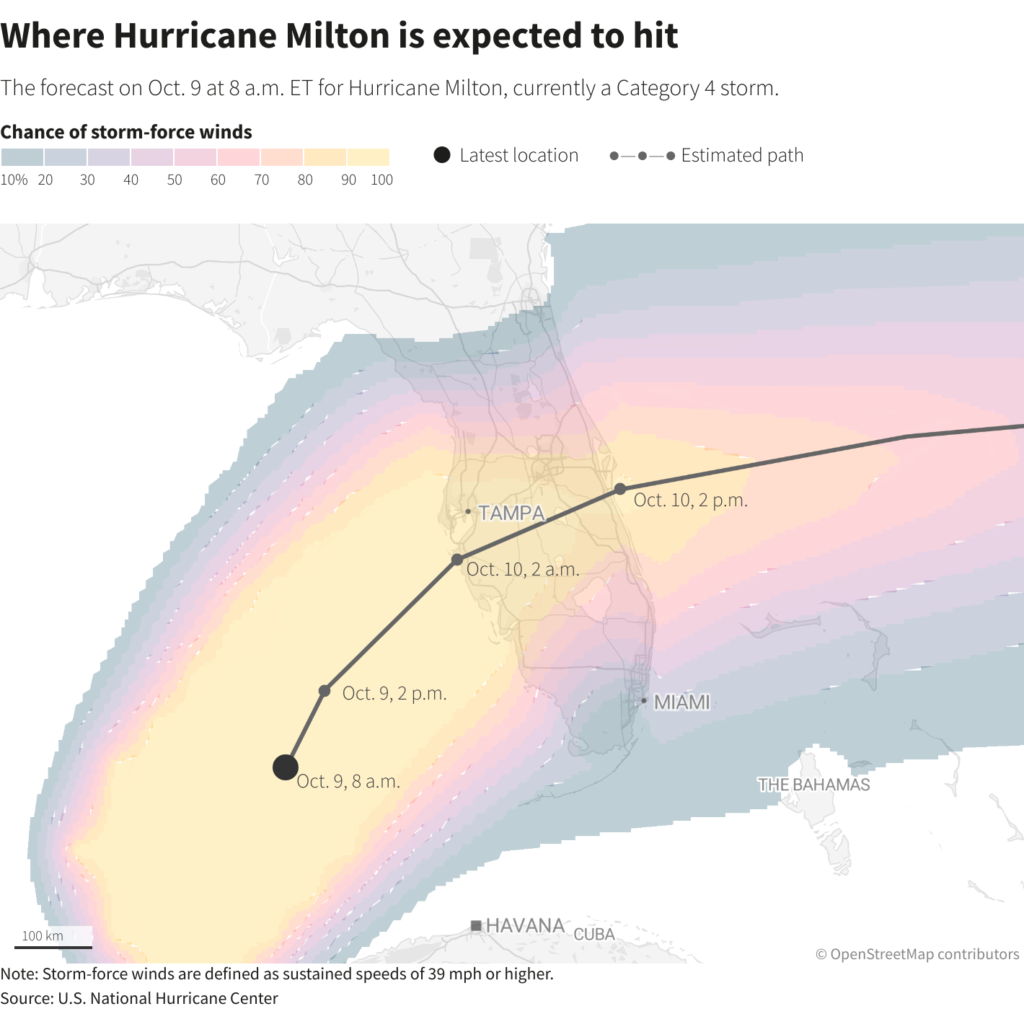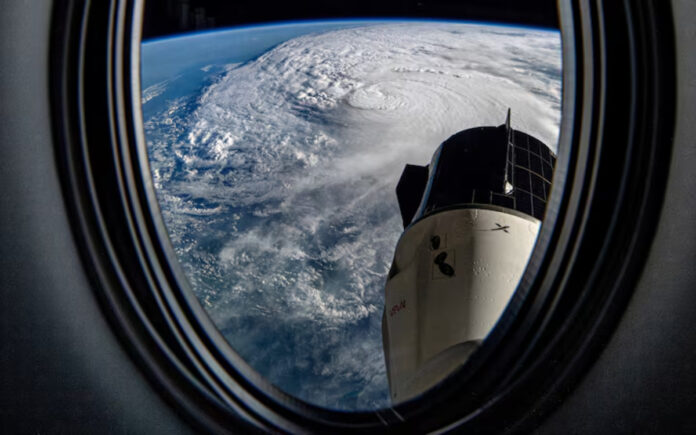Tampa, Florida: Hurricane Milton has rapidly intensified, becoming the third-fastest growing Atlantic storm on record. As it barrels towards Florida’s west coast, the U.S. National Hurricane Center has warned of a life-threatening storm surge that threatens to inundate low-lying areas.
When Is Hurricane Milton Expected to Hit Florida?
Milton’s center is moving northeast across the Gulf of Mexico at approximately 16 mph (26 kph). According to the hurricane center, the storm is expected to make landfall in Florida’s Tampa Bay area late Wednesday night or early Thursday morning.
How Powerful and Widespread Is Hurricane Milton?
As of Wednesday morning, Milton has sustained winds of 155 mph (249 kph), according to the U.S. National Hurricane Center. Hurricane-force winds extend up to 30 miles (45 km) from its center, with tropical-storm-force winds extending up to 125 miles (205 km).
What Makes Hurricane Milton So Devastating?
The unusually warm waters of the Gulf of Mexico, which have hit record highs of around 90°F (32°C) over the past two summers, have fueled Hurricane Milton’s rapid growth. The U.S. National Oceanic and Atmospheric Administration attributes this unusual warming to the storm’s rapid intensification.

Which Areas Are Under Hurricane Milton Evacuation Orders?
Mandatory evacuation orders have been issued in 15 of Florida’s 67 counties, affecting areas along the state’s west coast from Collier County to Levy County. This includes parts of the Tampa metropolitan area, home to 3.1 million residents, where many low-lying communities and islands are especially vulnerable to the storm.
What Alerts Are Being Issued to Florida Residents?
Florida officials have issued stark warnings. Tampa Mayor Jane Castor cautioned that residents in low-lying zones who choose not to evacuate will face deadly consequences. The U.S. National Hurricane Center predicts storm surges of 10 to 15 feet along the state’s western coast, from Anna Maria Island to Boca Grande. Additionally, destructive hurricane-force winds and torrential rainfall could cause flash flooding across central Florida.
Also Read | SpaceX’s Starship 5 Launch on the Horizon: FAA Approval Possible This Month
How Does Hurricane Milton Stack Up Against Hurricane Helene?
Many communities are still reeling from Hurricane Helene, which hit last month and claimed over 200 lives, mainly due to catastrophic inland flooding in North Carolina and Tennessee. Helene, a Category 4 storm, peaked with sustained winds of 140 mph (220 kph) and a minimum central pressure of 938 millibars. In contrast, Milton escalated into a Category 5 hurricane, with winds reaching 180 mph (285 kph) and a minimum pressure of 897 millibars. Though it was downgraded to Category 4 by Wednesday, Milton remains a severe threat.
Also Read | Ratan Tata, Visionary Industrialist and Philanthropist, Passes Away at 86
What Are the Five Most Intense Hurricanes Recorded in the Atlantic?
Milton has already joined the ranks of the most intense Atlantic hurricanes in history. The lower a hurricane’s central pressure, the more intense it becomes. With a minimum pressure of 897 millibars, Milton now ranks as the fifth most intense storm in the Atlantic. Wilma (2005) holds the top spot with a pressure of 882 millibars, followed by Gilbert (1988), the Labor Day hurricane (1935), and Rita (2005).



